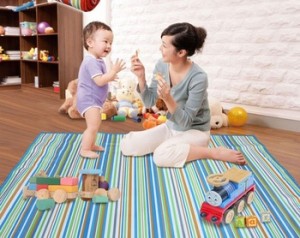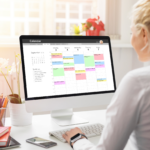The words echo in my ears. “Mommy… will you play with me?”
Panic sets in.
It occurs to me that I should really start prepping dinner.
I remember a phone call I have to make.
I notice that there are dust bunnies the size of actual bunnies littering my entire floor.
And my child wants to play something that I find excruciatingly boring.
As a clinician I have often been in the position of telling a parent that they need to sit on the floor and really be present with their child. I have told them that a parent’s presence is the greatest gift a child could receive. But parents have told me that they have a hard time fitting in time for play amid the hours of homework, housework and scheduled activities. Play is a thing that will happen when the real work is done.
Children need play. Lots of play. They need to play with each other and they need to play with us, their parents. Experts like Lawrence J. Cohen, author of the book Playful Parenting, encourage us to follow the child’s lead. They encourage us to play along with our kids without trying to teach anything, without directing the play. If you’ve tried to do this, you might realize how difficult it is to let your child guide the play. If you haven’t tried it recently, let me tell you. It’s hard. Dr. Cohen gives the example of playing catch. As parents we feel compelled to teach proper throwing technique. Our kids want simply to connect through a game of catch with their mom or dad.
Play is the bridge that connects parents and children. And yet, parents have told me that there are many barriers to playing at home.
And I understand.
There are many barriers to playing at MY home too!
So I’ve figured out a few things that help me to get through.
The first thing I do is set a timer. Timers are wonderful tools for families. As a parent, when I know that I’ve committed 15 minutes of my time to playing, I am more likely to invest in that time. For 15 minutes, I can ignore the dust bunnies and the phone calls. I can focus on building a bridge of connection with my kid. When the timer goes off, I know I’ll be able to deal with the world.
The second thing I do is give myself over to it (again, it’s only for 15 minutes!). I intentionally shed my self-conscious adult self, put down my phone, and pretend to be a kid. By focusing on what’s important to my child I can more easily lose myself in building a Lego bridge, or diapering a baby doll. If all else fails, think “fake it ‘til you make it.” By acting like the activity is fun and important, you may just discover how fun and important it really can be!
And the last thing I do is focus on the benefits for my child. As an adult, I do lots of things just because they’re healthy. Play is healthy for my kid. And I love my kid. I feed her vegetables. I force her to brush her teeth. I play with her. Being a parent is a very important job. Playing with my children is part of that job.
The dust bunnies will have to wait their turn.
I’ve got bridges to build.
If you’re interested in learning more about the ways in which play and parenting go together, Playful Parenting by Lawrence Cohen is a fantastic resource.
Cohen, L. (2001). Playful Parenting. New York, NY: Ballantine Publishing Group.





